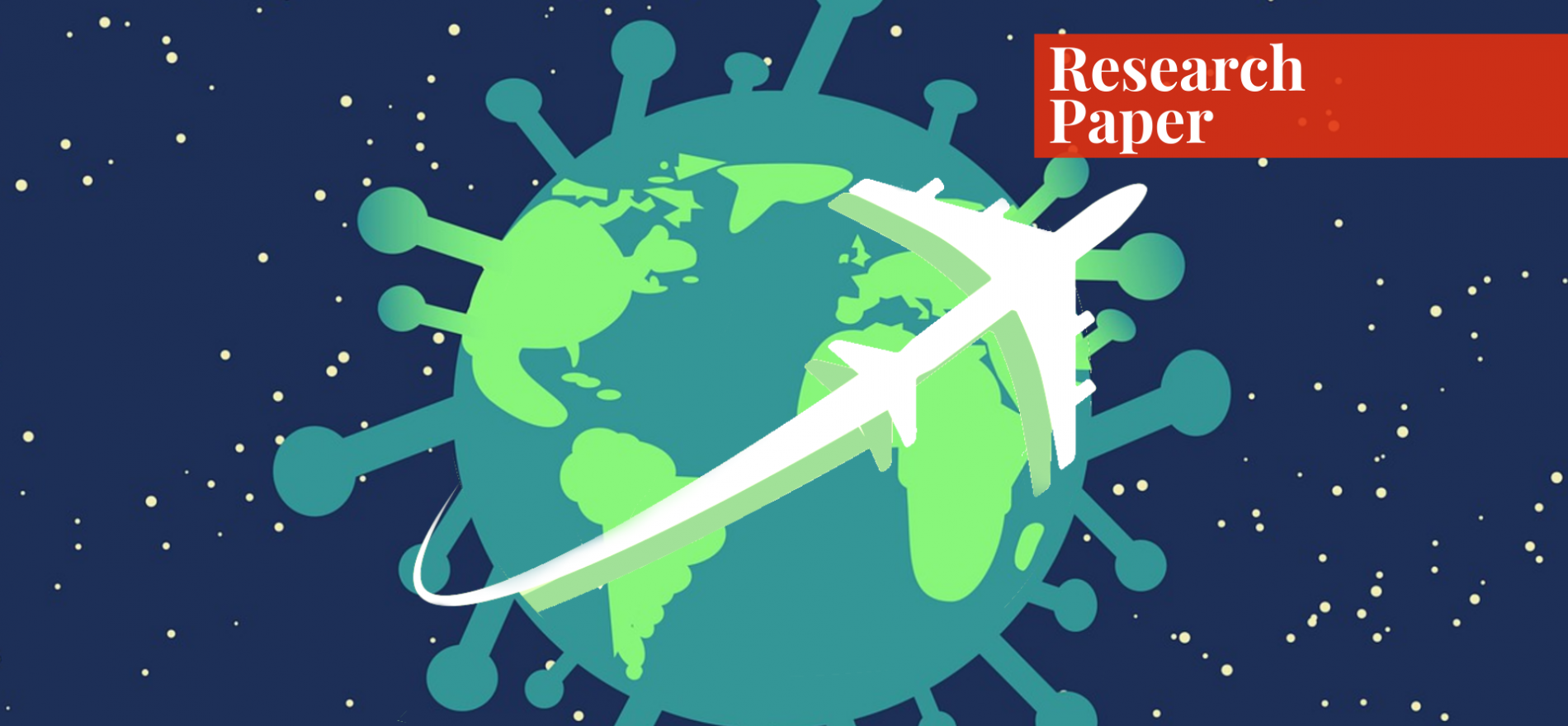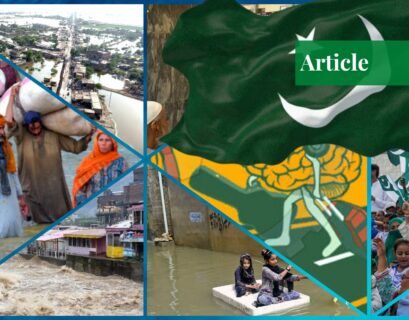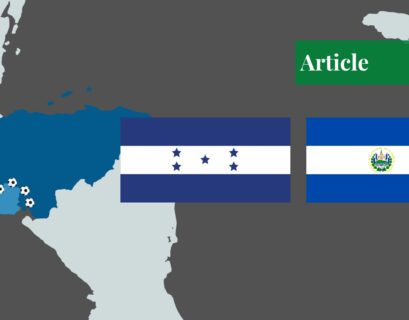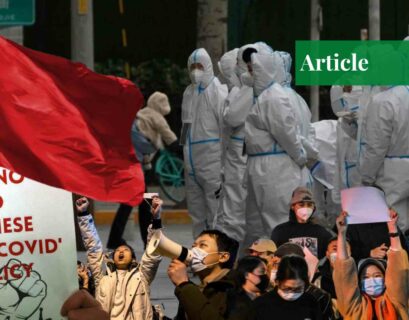Amna Babar is currently working with an NGO in Islamabad. She holds a bachelor's degree in social sciences with major in development studies from Bahria University Islamabad. She is fond of reading fiction and engaging in academic discourse pertaining to social development, women empowerment, environment, and human rights.
Introduction
The essay investigates the coronavirus pandemic as a contemporary issue in migration. It presents a case study of coronavirus and its effects on migration up until March 19, 2020. Migration, a phenomenon involving the movement of people from one place to another, which may be within a country or by crossing country borders, for purposes of settling or working (Huzdik, 2014), is a global, intrinsic human practice. Historically, humans have migrated in search of food, water, and shelter. The pursuit remains the same today as people seek to explore better opportunities, living standards, and escape from hardship (Economic Times, 2015).
Measuring and assessing the movement of people into and out of places considering factors at play, provides an insight into migration patterns. It is vital to evaluate trends in migration to understand the overarching situation of global and national mobility and settlement. In such a context, a pandemic, defined by the World Health Organization (WHO) as “the worldwide spread of a new disease” (Shannon, 2020), may cause drastic changes and disruption in conventional migration patterns due to shifts in global policy dynamics on international travel, border and immigration control (Carter, 2016). Cases of disease outbreaks in the past provide an outlook into the previous impact on global and national migration flows.
Ebola and Migration
The Ebola outbreak (2014-2016) increased the sentiments of fear and threat in China, due to frequent trade between China and African countries, along with the settlement of large numbers of African migrants in China, particularly in Guangzhou, an international trading hub. China’s Health Department took measures of increased health screenings and surveillance of African travellers by installing a temperature monitoring system of the travellers, asking them to report their body temperature twice each day for 21 days, and told them to carry a GPS-enabled cell phone at all times.
Africans with residency in China were allowed to return to their homes. However, those with visitor status were authorized to stay in only one hotel (Lin et al., 2015). In 2014, the United States issued a Temporary Protected Status (TPS) to people from Guinea, Liberia, and Sierra Leone already living in the US allowing them to stay on for 18 months and granting them legal status to work. However, despite being extended twice, as the immigration program approached its termination, Western African migrants were met with apprehension and fear of not only leaving their sources of income-generation but also the lingering threat of Ebola outbreak in their home countries (Samuel, 2016).
From a broader perspective, this points towards a restrictive and containing global migration policy during disease outbreaks. It, in turn, affects conventional migration patterns of travellers and migrants not only due to travel restrictions, but also due to greater susceptibility to racial discrimination in host countries as demonstrated above in the case of China, where not only prevention strategies were associated solely with those holding African nationalities (rather than being applied universally to people at risk for carrying the infection), but also increased racial discrimination towards African migrants living in China further curbing their access to health information and services (Lin et al., 2015).
Coronavirus and Migration
Coronavirus disease 2019 (COVID-19), “a contagious respiratory illness” (University of Minnesota Health, n.d.), first identified in 2019 in Wuhan, China, according to World Health Organization’s situation report, has 132,758 confirmed cases by March, with 4,955 recorded deaths globally (World Health Organization, 2020). The disease has caused a worldwide outcry, as the lack of a cure calls for radical measures including massive social distancing and quarantining those infected (Bertram, 2020). With respect to the coronavirus and its impact on internal migration, the cases of China and Iran can be examined.
In China, the government put into place robust containment efforts in Wuhan, Hubei province as the city went into complete lockdown, which, while positively played out in limiting the numbers of cases outside the area (UN News, 2020), also greatly affected the mobility of local people in moving within the country and further for migrant workers and international students to be unable to return to their native counties. On the other hand, in Iran, internal migration patterns, despite the outbreak of coronavirus, remain largely unaffected. Despite government efforts and instructions to establish nationwide quarantine, the population is following their travel plans and arrangements as per their convenience (Shinkman, 2020).

On a global level, this has translated into the adoption of severe containment policy measures as border closures and travel restrictions come into effect. The United States has not only enforced international travel bans (i.e. US travel ban on 26 European countries, barring entry of all foreign nationals who have visited China, Iran and a group of European countries during past 14 days) but has also closed down the border with Canada, in addition to closing the southern border to migrants – with immigration authorities soon to initiate removing migrants entering from official points of entry and turning them back to Mexico in efforts to curb the spread of the pandemic.
Moreover, agency sources have reported that while some asylum screenings will continue via telephone, other immigration interviews have been cancelled until April 1, 2020 (O’Toole & Fiske, 2020). Other countries including those in Africa, the Americas, Asia, Australia, the Middle East, and Europe are exercising travel restrictions and border regulation and control (Salcedo et al., 2020). Such policy measures adopted due to the coronavirus reflect a changing atmosphere for international migration patterns – this is due to the growing stigma of migrants being seen as “carriers” of the viral disease which, in turn, disbars the entry and exit of migrant populations worldwide.
Concerning migrant populations, situations regarding undocumented migrant workers in host countries have increased the sense of threat and fear in the countries regarding the uncontrollable spread of COVID-19. In the case of Malaysia, which is populated by large pools of undocumented migrant workers who avoid contact with government agencies, tracing has become even more difficult in the current outbreak situation. While cases of fatalities or severe illness amongst migrant workers may come to the surface at some point, this would be so after significant delay nullifying efforts for containment and mitigation (Khoon, 2020).
Furthermore, this also emphasizes increased health risk for illegal migrant populations due to limited access to adequate healthcare information and services. In Greece, thousands of refugees have overcrowded Lesbos Island living in poor and unsanitary conditions. The migrant vulnerability and exposure to the outbreak in the region have worsened further by the far-right groups’ violence against the migrants, leaving camps without access to food or medical treatment (teleSUR, 2020).
The period following the pandemic has also witnessed increased resentment towards migrants residing in host countries. In Hungary, as the number of cases surged, the government declared a lockdown and largely attributed blame to foreigners and migration for the spread of the coronavirus. The Prime Minister stressed upon a direct link between illegal migration and the coronavirus pandemic, pointing the fingers of blame on migrants coming from Iran (one of the focal areas where the pandemic has struck).
This has led not only to severe measures for border protection and temporary closure of transit zones but also the expulsion of migrants as demonstrated in the case of two Iranian students who have been expelled, quarantined and prohibited re-entry into Hungary and the European Union for three years (Makszimov, 2020). In Italy, a country drastically hit by the pandemic, the future of many migrants and asylum seekers, themselves at risk from the virus, has become uncertain as operations to assist them have been put at hold.
Not only have the integration and assistive services been reduced heavily, the political stances over migration have also stiffened. In Sicily, a widely used arrival point for migrants, the region’s authorities have criticized the central government’s decision to keep ports open to migrant ships in late February, attributing it as a trigger for the health emergency in Italy (D’Ignoti, 2020). In a region where attitudes towards immigrants are typically discriminatory and unwelcoming, such a turnout of events may consequently exacerbate the political and social climate of host countries in terms of migration policy and action.
Travel for pilgrimages has also been greatly impacted as in the case of Saudi Arabia, which has placed a temporary ban on Umrah pilgrims, irrespective of nationality, visa type or residence status, in an attempt to ensure public safety and prevent the spread of COVID-19 in the country (U.S. Department of State, 2020). However, while travel bans, restrictions, and border closures are being implemented, health experts have argued against such extreme measures, underlining the crucial need at this time to extend help beyond borders.
As Amy Fairchild, an ethicist, public health historian, and dean of the Ohio State University’s College of Public Health stresses in the case of US travel policy, “I hope President Trump is not thinking about shutting down the borders completely – because then you really do have a situation in which we can’t help other nations, and the disease will nonetheless be here. We will only end up creating vulnerable, underserved populations in this country, and we’ll exacerbate the challenges of providing aid to African and Asian countries that have more fragile health care systems.”
While the US has associated threat of pandemic exposure through the Southern border, it has been found that, so far, there have been zero reported cases of the disease in the Rio Grande Valley and northern Mexico. However, in U.S. states bordering Mexico, including California, Arizona, and Texas, cases have been reported (Turse, 2020). This highlights a rather prejudiced approach towards enforcing border restriction measures as an attempt to ward off immigrants entering the US from the southern border.
Moreover, it has been stressed that focus on border closures not only diverts attention from strengthening the national health system but also averts measures to provide international aid and assistance to poorer countries lacking efficient and strong health systems to tackle the pandemic (Turse, 2020). This, in turn, reflects a shifting global environment for migration, as migrants and travellers are stereotyped as coronavirus carriers and as an external threat regardless of their health status. Immigrant groups settled in host countries are also being met with increased discrimination and racism as in the case of Chinese immigrants subject to xenophobia and anti-Asian racism worldwide following the COVID-19 outbreak in Wuhan.

In New York, there have been countless reports of physical and verbal attacks against Asians as well as misinformation and harmful imagery online playing into the stereotypes; small Chinese businesses including Chinese grocery stores and restaurants have been temporarily closed down (Ramirez, 2020). Considering the information gathered and outlined above, migration in the current global atmosphere of travel restrictions and bans, border closures, rising discrimination against immigrant groups in host countries, has become complex and critical.
However, while on one hand containment measures are necessary for the prevention, it must not restrict humanitarian assistance to countries in need of it, and migrant populations residing within host countries must not be marginalized – their information and health needs must be assessed and catered to. More importantly, the current global political climate should not leave a lasting impact on the immigration perspective and policy.
Conceptual Framework
The conceptual framework of this research essay integrates micro and macro-level forces in collectively shaping out-migration patterns. It assumes that at the macro-level, the situation of a global disease outbreak leaves an immense impact on migration policy, particularly due to restrictions in mobility and increased border regulation to curb the spread of disease, which, becoming a structural factor, affects the movement and settlement of people. However, it is conjoined at micro-level as to how individual choice, will, and factors further develop in the context of larger events. This framework is illustrated further through theories of international migration.
Among macro-factors, the political, demographic, socio-economic, and environmental situations are major contributors to migration which in this case have been shaped out by the pandemic. Coronavirus has resulted in stricter migration and immigration policies, travel bans, border patrolling, and an increased sense of threat towards migrants who are being blamed for carrying and spreading disease. Lee’s (1966) theory of “push” and “pull” factors may explain how such factors may affect migration i.e that there may be a decline in push factors as individuals safeguard themselves in native countries (being temporarily warded off from immigration).
The pull factors may also temporarily decrease due to tense political, social, and economic climate for migrants in host communities. However, this may initiate a process of a push towards return migration through pull by native countries as migrants seek spaces free from xenophobia, depending upon the unfolding of larger events. At the micro-level, correlation can be built with migrant network theory in predicting patterns of migration. As is described in the theory, there is a web of social ties existing in between natives in sending countries, and migrant communities settled in receiving countries (in the form of family, friends, work colleagues, etcetera.), allowing for the exchange of information regarding the host country, and giving potential migrants insight into on-ground realities taking place.
In this case, it includes becoming aware of increased racial discrimination taking place in host countries towards migrant communities, such as the Chinese immigrants in the US, who are being blamed for the spread of the virus, putting their safety and wellbeing at risk due to threats and attacks, subsequently affecting their access to services and sources of livelihood. This knowledge and awareness regarding the situation in the host country, a result of a structural shift, will impact decision-making regarding migration at the individual level.
References
- Bertram, C. (2020, March 10). COVID-19 and migration: we need a firewall. Crooked Timber. https://crookedtimber.org/2020/03/10/covid-19-and-migration-we-need-a-firewall/
- Carter, E. D. (2016, July 7). When Outbreaks Go Global: Migration and Public Health in a Time of Zika. Migration Policy Institute. https://www.migrationpolicy.org/article/when-outbreaks-go-global-migration-and-public-health-time-zika
- D’Ignoti, S. (2020, March). How coronavirus hits migrants and asylum seekers in Italy. The New Humanitarian. https://www.thenewhumanitarian.org/news/2020/03/16/italy-coronavirus-migrants-asylum-seekers
- Economic Times. (2015, September 5). European Union needs to accept migration is intrinsic to Homo sapiens.https://economictimes.indiatimes.com/blogs/et- editorials/european-union-needs-to-accept-migration-is-intrinsic-to-homo-sapiens/
- Huzdik, K. (2014). Migration potential and affecting factors in Hungary in the first decade of 21st century. [Doctoral dissertation, Szent István University] https://szie.hu/file/tti/archivum/Huzdik_Katalin_thesis.pdf
- Khoon, C. C. (2020, March 14). Covid-19 and contact averse undocumented migrants. The Star.https://www.thestar.com.my/opinion/letters/2020/03/14/covid-19-and-contact-averse-undocumented-migrants?itm_source=parsely-api
- Lee, E. S. (1966). A Theory of Migration. Demography, 3(1), 47-57. https://www.jstor.org/stable/2060063
- Lin, L., Hall, B. J., Khoe, L. C., & Bodomo, A. B. (2015). Ebola Outbreak: From the Perspective of African Migrants in China. American Journal of Public Health, 105(5). https://ajph.aphapublications.org/doi/10.2105/AJPH.2015.302649
- Makszimov, V. (2020, March 15). Hungary on lock-down, blames foreigners, migration for coronavirus spread. Foundation EURACTIV. https://www.euractiv.com/section/coronavirus/short_news/hungary-update-covid-19/
- O’Toole, M., & Fiske, M. H. (2020, March 17). Trump administration takes steps to close border to migrants, citing coronavirus. The Los Angeles Times. https://www.latimes.com/politics/story/2020-03-17/trump-administration-takes-steps-to-close-border-to-migrants-citing-coronavirus
- Ramirez, R. (2020, March 14). How a Chinese immigrant neighborhood is struggling amid coronavirus-related xenophobia. Vox. https://www.vox.com/identities/2020/3/14/21179019/xenophophia-chinese-community-sunset-park
- Salcedo, A., Yar, S., & Cherelus, G. (2020, May 8). Coronavirus Travel Restrictions, Across the Globe. The New York Times. https://www.nytimes.com/article/coronavirus-travel-restrictions.html
- Samuel, L. (2016, October 10). With the end of an immigration program comes Ebola fears for West Africans in the US. STAT. https://www.statnews.com/2016/10/10/ebola-immigration-west-africa/
- Shannon, J. (2020, March 11). Coronavirus has been declared a pandemic: What does that mean, and what took so long? USA Today. https://www.usatoday.com/story/news/nation/2020/03/11/coronavirus-pandemic-world-health-organization/5011903002/
- Shinkman, P. D. (2020, March 17). Iran: ‘Millions’ May Contract Coronavirus as Regime Struggles With Containment. U.S. News & World Report. https://www.usnews.com/news/world-report/articles/2020-03-17/iran-millions-may-contract-coronavirus-as-regime-struggles-with-containment
- teleSUR. (2020, March 12). Greece: Covid-19 Case in Lesbos Spreads Fear Among Migrants. https://www.telesurenglish.net/news/Greece-Covid-19-%20Case-in-Lesbos-Spreads-Fear-Among-Migrants-20200312-0012.html
- Turse, N. (2020, March 5). AS TRUMP STUMBLES ON CORONAVIRUS, HEALTH EXPERTS WARN AGAINST BORDER CLOSURES. The Intercept. https://theintercept.com/2020/03/05/coronavirus-trump-closing-borders/
- UN News. (2020, March 16). China shows COVID-19 Coronavirus can be ‘stopped in its tracks’. https://news.un.org/en/story/2020/03/1059502
- U.S. Department of State. (2020, March 13). Pilgrimage Travelers (Hajj and Umrah). https://travel.state.gov/content/travel/en/international-travel/before-you-go/travelers-with-special-considerations/hajj-umrah.html
- University of Minnesota Health. (n.d.). WHAT SHOULD YOU DO IF YOU SUSPECT YOU HAVE COVID-19? https://www.mhealth.org/care/conditions/covid-19
- World Health Organization. (2020, March 13). Coronavirus disease 2019 (COVID-19) Situation Report – 53. https://www.who.int/docs/default-source/coronaviruse/situation-reports/20200313-sitrep-53-covid-19.pdf?sfvrsn=adb3f72_2
If you want to submit your articles and/or research papers, please check the Submissions page.



















